CZECH REPUBLIC
Prague

Prague
Prague
Prague is a historical city whose entire centre has been included in the UNESCO World Heritage List. It is the capital of the European republic Czech Republic. Prague is also known as "the golden city" and "the city of a hundred towers", because there are many buildings with towers and golden ornaments in the historical centre. Prague is one of the most touristic cities in Europe because of its beautiful old centre and the many sights in and around the city. Prague has endured several wars, but fortunately the centre has not suffered from these.
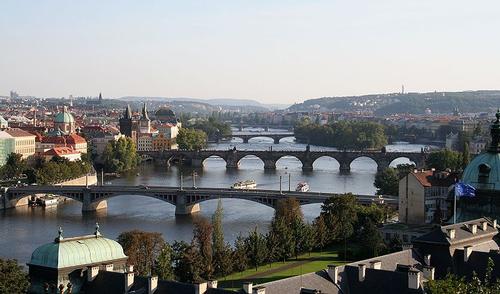 PraguePhoto: Che CC 2.5 Generic no changes made
PraguePhoto: Che CC 2.5 Generic no changes made
| advertisement |
| Hotels Prague |
Location
Prague is the capital of the Eastern European Czech Republic. The city is located in the west of the country and has an area of 469 square kilometres. Around 1.2 million people live in Prague and are referred to as Prague residents. Prague is built on a landscape with many hills and the river Vltava flows through the city.
Weather
Prague's climate lies between a continental and a maritime climate. The annual temperature in the Czech capital is around 8°C. Prague's climate is temperate: it never gets very cold in the winter and it will never be hot for long periods in the summer. Prague is sheltered by mountains so there is usually little wind. In the winter the average temperature is around -0.5°C and in the summer months it averages 19°C.
History
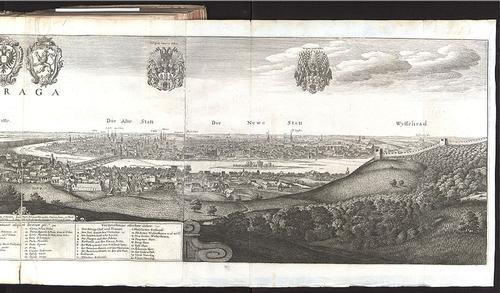 Prague Panorama around 1650Photo: Public Domain
Prague Panorama around 1650Photo: Public Domain
There have been human settlements in the area around the city of Prague since prehistoric times. This is mainly due to its perfect location on the river and the trade opportunities with Germany and Poland. Prague's history as a royal city began with the construction of Prague Castle in the late 9th century by Prince Borivoj. In 1257, King Premysl Otakar II founded and fortified the new city on the left bank of the river. Since the 14th century, this area has been called the Small Town. The great Bohemian ruler Charles IV (1346-1378) made major extensions to the castle and turned Prague into an amazing Gothic city, one of the largest and most important cities in Europe at the time.
In 1526, the Habsburgs gained control over Prague. In the second half of the 16th century the whole city was rebuilt in Renaissance style and from 1583 to 1612 the art-loving Emperor Rudolf II moved his royal seat from Vienna to Prague. On 12 February 1748, Emperor Joseph II united all parts of the city to form Prague City. Many churches were built in the Baroque style. With the urban renewal in 1893, most of the Jewish quarter, the Old Town and the New Town were modernised. New buildings in the style of Cubism, Art Nouveau and Neo-Renaissance were built in the place of the old buildings. On 28 October 1918, the independent and free Czechoslovak Republic was founded in Prague. In 1938, on the eve of the Second World War, Prague had more than 1 million inhabitants.
Hitler occupied the city in 1939 and gave a speech from Prague Castle, announcing his plans for the Protectorate of Bohemia and Moravia (Protektorat Cechy a Morava). Under the German occupation, the Jewish community was persecuted.
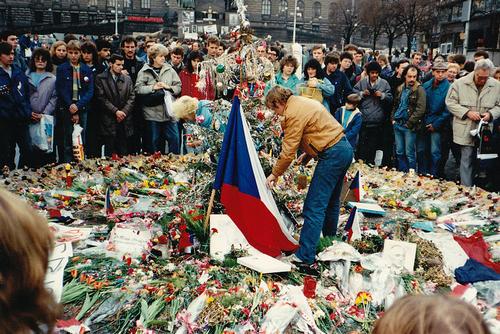 Vaclac Havel, later president during the Velvet RevolutionPhoto: MD CC 3.0 Unported no changes made
Vaclac Havel, later president during the Velvet RevolutionPhoto: MD CC 3.0 Unported no changes made
Another important era was the Velvet Revolution of 1989, when many people protested in the city streets against the power of the Communist Party of Czechoslovakia. In 1993, the new, more democratic Czech Republic was born, with Prague as its proud capital. Today, Prague has approximately 1,200,000 inhabitants.
Jewish Prague
The first Jews settled in Prague as early as the 10th century. They founded a settlement along the Vltava River because of its favourable trade position near the river and two important roads. Over the years, the group of Jews grew larger and the hatred for them increased. In 1096, the first pogrom took place in Prague. All Jews were herded into a ghetto surrounded by a high wall. More than 18,000 Jews lived within the walls of the ghetto. In 1389, there was a fierce pogrom in which more than 3,000 Jews died. Only in 1858 were Jews allowed to live outside the ghetto again. In 1850, the Jewish ghetto was named Josefstadt (German) or Josefov (Czech) after Emperor Joseph II, who contributed to the acceptance of Jews. Eventually it was decided to demolish most of Josefov. All that remained was a cemetery, a town hall and six synagogues, which have now become Prague's most visited sights.
Sights
In Prague's Jewish quarter, as mentioned above, there are many interesting sights to see. One example is the High Synagogue from the 16th century. The building is so called because the actual synagogue is on the first floor of the building. In 1689, the building burned down, but after the fire it was rebuilt in the old style. It is a beautiful Renaissance-style building. A stone's throw away from the High Synagogue is the early Gothic Alt-Neu shul from the 13th century. This is one of the oldest synagogues in Europe and is still used for services today.
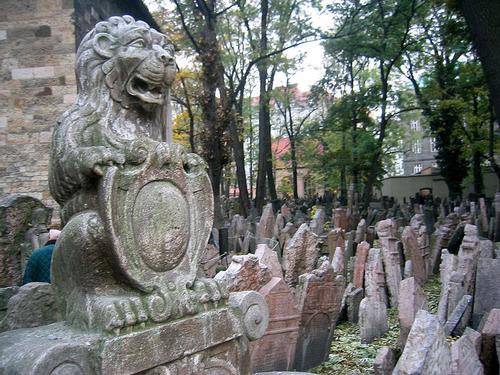 Jewish cemetery PraguePhoto: Andreas Praefcke CC 3.0 Unported no changes made
Jewish cemetery PraguePhoto: Andreas Praefcke CC 3.0 Unported no changes made
Near the Alt-Neu shul is the famous Jewish cemetery that attracts hordes of tourists every year. It is the oldest Jewish cemetery in Europe. The cemetery is part of the Jewish Museum. There are probably more than 100,000 people buried in various layers on top of each other.
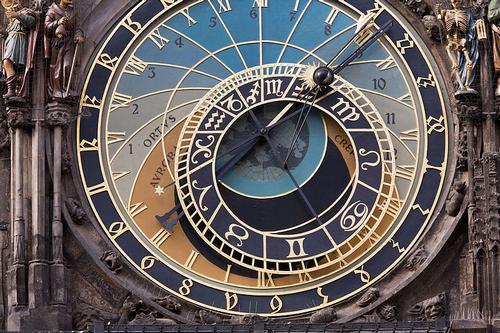 Astronomical Clock PraguePhoto: Jorge Royan CC 3.0 Unported no changes made
Astronomical Clock PraguePhoto: Jorge Royan CC 3.0 Unported no changes made
Prague also has a lot of non-Jewish sights, such as the many towers and the astronomical clock from 1490. Every hour when the clock strikes on Old Town Square, the doors open and Jesus and his apostles come out. It is a real spectacle to see, especially when you consider that the mechanism is already more than 520 years old.
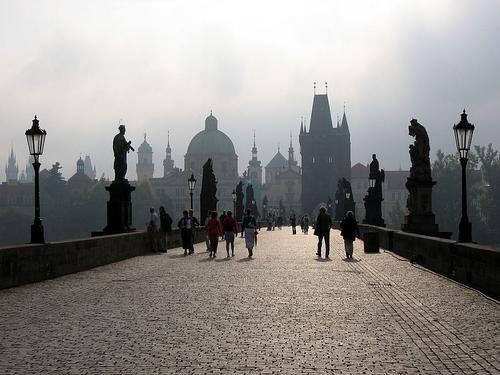 Prague Charles BridgePhoto: Chosovi CC 2.5 Generic no changes made
Prague Charles BridgePhoto: Chosovi CC 2.5 Generic no changes made
Prague's Charles Bridge is a must-see on this list of unforgettable sights. The bridge is 10 metres wide and 500 metres long and was built in the 14th century. It connects Old Prague with Prague Castle. The bridge consists of three phenomenal towers and several statues. It is usually very busy on the bridge. You will find many artists and street performers there. Those interested in art will find many attractive museums scattered around the city. Below is just a small selection from the overwhelming selection.
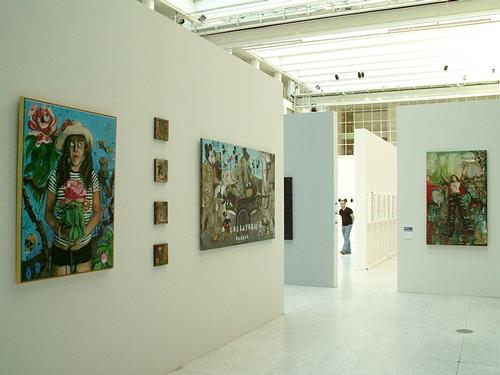 National Gallery in PraguePhoto: Jaimrsilva CC 4.0 International no changes made
National Gallery in PraguePhoto: Jaimrsilva CC 4.0 International no changes made
At the heart of the city is the National Gallery of Prague, known for its extensive focus on Eastern European art and Russian paintings, while the Czech Museum of Fine Arts features many temporary exhibitions of modern paintings, sculptures and contemporary installations.Other prominent museums in Prague include the National Gallery, which is housed in a particularly large building dating from the 1920s and is home to an extensive collection of modern Czech art. Famous artists here include Klimt and Picasso. Those looking for more traditional art will enjoy the collection of old masters at St. George's Monastery in Prague Castle, which features works from the Baroque and Renaissance periods.
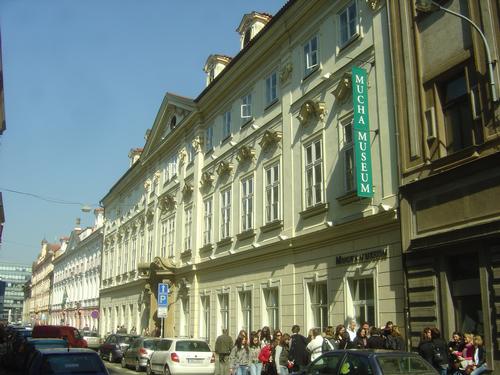 Mucha Museum in PraguePhoto: DIMSFIKAS CC 3.0 Unported no changes made
Mucha Museum in PraguePhoto: DIMSFIKAS CC 3.0 Unported no changes made
Finally, the Mucha museum is very special. Alfons Mucha is an artist from Moravia who worked in the Arts Nouveau (Jugendstil) style. He travelled through many countries and is especially known for the posters he made in Paris of, among others, the theatre queen Sarah Bernardt. The Mucha museum is housed in a special building, the Kaunicky palace. A baroque building that is worth a visit in itself. The museum has a large collection of Mucha's works, including posters, paintings, drawings and personal belongings.
Tips
Wenceslas Square and Na Prikope pedestrian street offer a good mix of international department stores, local shops and banks. Some well-known shops include Marks & Spencer, Debenhams, H&M and C&A. Old Town Square has a permanent market with arts and crafts and souvenirs. There are also crystal shops and small boutiques in the streets leading to the square. Parizska is the trendiest (and most expensive) street in Prague. There are boutiques of luxury brands like Cartier and many better restaurants and cafes.
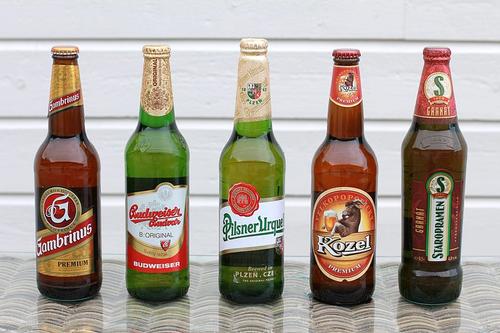 Prague Czech BeersPhoto: Øyvind Holmstad CC 3.0 Unported no changes made
Prague Czech BeersPhoto: Øyvind Holmstad CC 3.0 Unported no changes made
Czech beer has been around since the 10th century. The best known brands are Plzen (Pilsner Urquell) and Budvar (Budwaiser), but there are dozens of other really good beers (Kozel, Krušovice, Radegast, Smichov ...). Budvar has been brewed in Ceske Budejovice in southern Bohemia for the last 300 years. Beer experts say that the original Czech Budvar is better than the American copy. Half a litre of beer usually costs between 1 and 2 euros.
Useful links Prague
BBC Country ProfilesWorld Fact Book Explore all Countries
How to call
Last updated June 2025
Copyright: Team - The World of Info